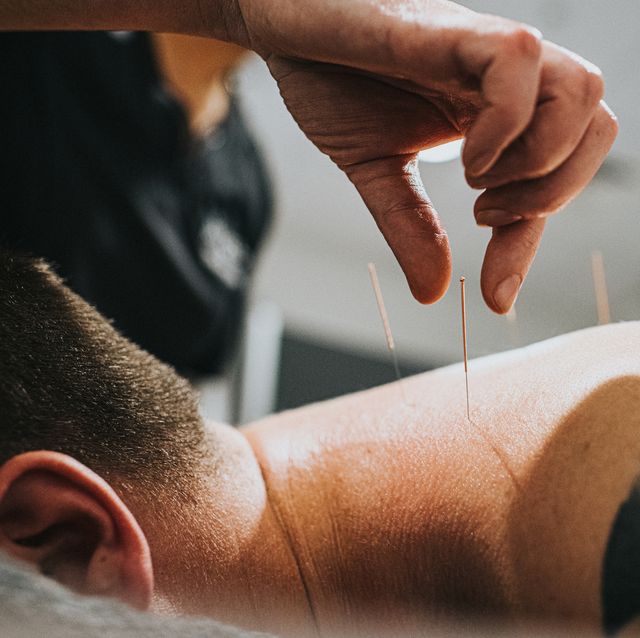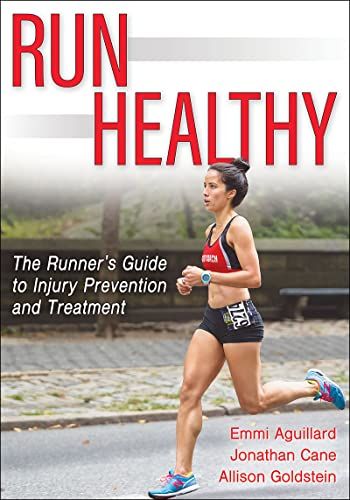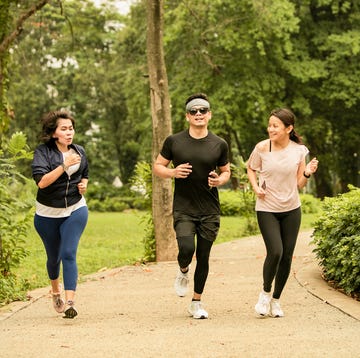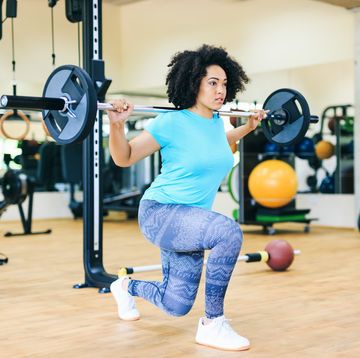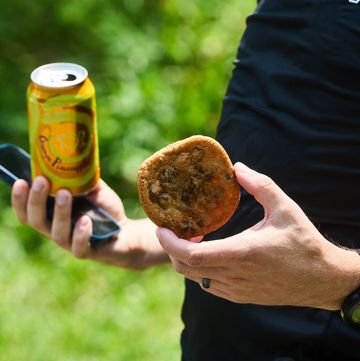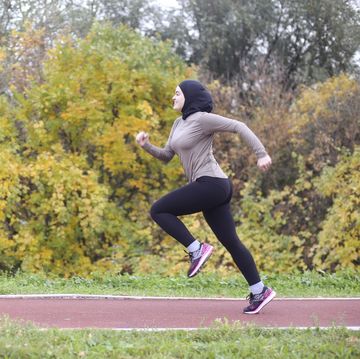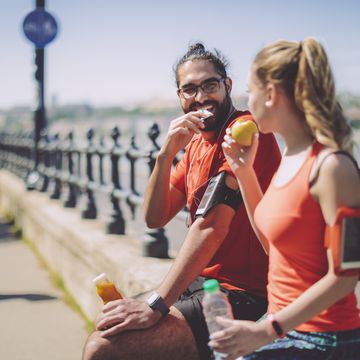Australian humorist Tim Minchin once said, “You know what they call alternative medicine that’s been proved to work? Medicine.”
While Minchin’s comment was intended as a joke, there’s a lot of truth to it. Many so-called alternative treatments lack empirical evidence to support them, instead relying on some combination of celebrity and athlete endorsements and pseudoscience. Some alternative therapies are appealing because they’re perceived as new or cutting edge, while others benefit from the aura of thousands of years of use.
So what’s worth trying? After all, the placebo effect—whereby you gain a tangible benefit from merely believing a treatment will work—is very real. Here we cover several popular therapies that some runners swear by and others eschew. In addition to describing the therapy, we answer the most important questions: Does it work? Is it safe? Should I try it?
Cupping
In the 2016 Summer Olympics, countless athletes were seen with round discolorations all over their bodies. Given that one of those athletes was swimmer Michael Phelps, who would go on to win five gold medals that year, widespread interest arose around what these marks meant and how they might have aided Phelps’s performance.
Those marks were the aftereffects of a technique known as cupping. Cupping is the practice of placing glass cups against the skin to form a partial vacuum, which lifts the skin. A form of myofascial decompression, it is believed to stimulate the circulation of blood to the area.
Cupping can be traced back thousands of years to China, Egypt, and the Middle East. Proponents claim it can help with issues such as pain and inflammation, can improve blood flow, and can assist in the removal of “toxins.”
Does It Work?
Advocates are quick to point to Phelps and other world-class athletes who swear by the treatment. Still, the actual mechanism by which cupping therapy is supposed to work is unclear. While some studies have shown benefits ranging from improvements in blood cholesterol levels to pain relief, most peer-reviewed science is not as supportive of the technique’s efficacy. Designing double-blind studies (in which both the investigator and the subject are unaware of whether the technique in question or a placebo is being used) is difficult when researching something like cupping, and most of the evidence used to argue in favor of cupping comes from studies that pair it with another treatment or have other biases. Much of the benefit seen may be attributed to the placebo effect.
Is It Safe?
Other than the telltale bruising, side effects are fairly minimal, though some instances of burning have also been observed.
Should I Try It?
For the most part, the scientific community does not support cupping. Evidence-based practitioners point out that its advocates rely on anecdotal evidence and the placebo effect. Yet while cupping alone is not going to propel you to the next Olympic games, some clinicians keep it in their soft tissue mobilization toolbox. Emmi Aguillard, a physical therapist and running coach, uses a combination of hard, plastic cups and soft, silicon cups in her physical therapy practice. She applies them to help fascia glide more smoothly in areas of the body that have very dense connective tissue such as the IT band.
Whole Body Cryotherapy
Whole body cryotherapy (WBC) is a technique in which your body is enclosed in a chamber and exposed to extremely cold air for two to four minutes. The term cryotherapy simply means cold therapy, and WBC is, as the name suggests, a means of delivering that therapy to the whole body rather than a localized area, as with an ice pack.
Does It Work?
Advocates claim WBC can help with everything from migraines to weight loss, arthritis pain to mood disorders, low-risk tumors to Alzheimer’s disease. However, the suggestion that its efficacy is any greater or wider ranging than simpler, more traditional administration of cold therapy is dubious at best. Aron Yustein, M.D., a medical officer in the Food and Drug Administration’s (FDA) Center for Devices and Radiological Health, has stated unequivocally that the FDA has not cleared or approved WBC devices as safe and effective to treat medical conditions, no matter what advertisers may have you believe. A review of research on WBC by sports scientists and public health researchers in Australia and the U.K. failed to find sufficient evidence that WBC reduces self-reported muscle soreness or improves subjective recovery after exercise. In other words, the research just is not there to support this intervention.
Is It Safe?
Rashes, burns, and frostbite are among the potential side effects of WBC. Fatalities have occurred when this therapy is used improperly and unsupervised. For instance, in 2015, a cryotherapy spa worker was using the chamber unsupervised and either accidentally locked herself in or passed out. She was found dead 10 hours later.
Should I Try It?
As with many other showy techniques, there’s a certain “cool factor” to WBC (pun intended). However, there’s reason to be wary of claims that this technique is any more beneficial than an ice pack, ice bath, or other cold therapy that physical therapists, physicians, and athletic trainers have been using for decades.
Acupuncture
Acupuncture is a centuries-old method of treating pain, along with many other ailments, and is considered a staple of traditional Chinese medicine. It involves the insertion of very thin needles through the patient’s skin at specific points on the body. The theory behind acupuncture is that it balances the patient’s chi, or energy, which flows through specific pathways in the body. The insertion of needles into precise areas along this path is said to allow the practitioner to balance that flow.
Does It Work?
As is often the case, it depends whom you ask. On the one hand, acupuncture is widely used not only in Asia but across the United States and elsewhere, including within more conventional medical settings. On the other hand, the vast majority of peer-reviewed studies offer reason for skepticism. Simulated acupuncture, which involves randomly placing needles, rather than inserting them at precise sites, has shown comparable results to traditional acupuncture. Similarly, studies in which the subject is unable to view the insertion have shown that poking, but not breaking, the skin with toothpicks produces similar results. The Mayo Clinic points out “there’s also evidence that acupuncture works best in people who expect it to work”—which is a strong argument for the placebo effect.
Is It Safe?
When working with a certified practitioner who uses sterile needles, acupuncture is safe. There is very little risk of infection, and pain is usually minimal.
Should I Try It?
Many people classify acupuncture in the “what’s the harm?” category. When done by a trained acupuncturist, the answer is almost definitely “no harm.” Whether it will be of any benefit remains an outstanding question.
Infrared Saunas
Traditional saunas have been around for thousands of years. Typically they use charcoal or stones to heat a room, causing anyone shut inside to heat up and eventually sweat. Infrared saunas (or far-infrared saunas) rely on infrared light, which is purported to heat the body from the inside out, therefore requiring far lower temperatures (around 135 degrees Fahrenheit) than in traditional saunas (typically 185 degrees Fahrenheit or more). Some advocates of infrared saunas suggest that their mechanism is more effective for removal of heavy metals or other “toxins.” Others suggest that the simple fact that it’s more comfortable than traditional saunas allows the user to tolerate it for a longer period of time, thereby increasing its efficacy.
Does It Work?
As with many other health trends, those promoting infrared saunas make vague health claims, reference unnamed “toxins,” and rely heavily on celebrity testimonials. Meanwhile, scientific consensus is equivocal at best. Some studies have shown benefits for chronic health conditions, and some have suggested modest cardiovascular benefits in untrained populations. Some people may also like it to help with heat acclimatization if they’re training for a hot-weather race while living in a cooler climate. However, the notion that a sauna of any type will help you sweat out toxins to any significant degree is not backed by science.
Is It Safe?
If you’re pregnant, lactating, or have cardiovascular disease, you may want to err on the side of being overly cautious and avoid saunas. Otherwise, saunas—infrared or otherwise—appear to be safe.
Should I Try It?
Think of saunas as the “chicken soup” of wellness: You may enjoy them, and they may make you feel a little better, but it’s highly unlikely that they have any magic properties.
The reality is that if a runner is faster than you, it’s likely due to some combination of genetics, training, and experience—not the pills or drinks or jellybeans they’re endorsing. That’s not to say you can’t boost your confidence with certain innocuous practices (lucky socks, anyone?). After all, the brain is a powerful organ! And science is always evolving, so there may be a real recovery breakthrough on the horizon However, when a new treatment comes across your radar, remember that scientific proof doesn’t come from anecdotes, no matter how numerous or high-profile the source.
Adapted with permission from Run Healthy: The Runner’s Guide to Injury Prevention and Treatment, by Emmi Aguillard, Jonathan Cane, and Allison Goldstein.
..
Allison Goldstein is a freelance writer and editor who is endlessly fascinated by the scientific “why” of things. When not writing or reading, she can be found running, baking, or petting her cat, Tabouli.
